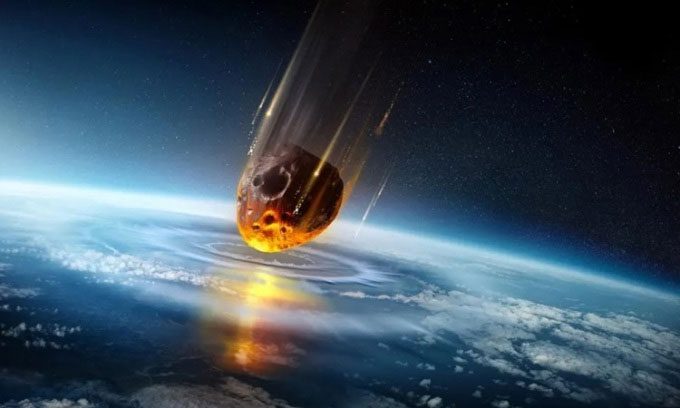Researchers Discover Evidence of a 520km-Wide Meteorite Impact Crater 4,000m Beneath Australia.
From 1995 to 2000, geologist Tony Yeates speculated that the magnetic field patterns beneath the Murray Basin in New South Wales likely originated from a massive buried impact structure. New analysis based on geophysical data collected between 2015 and 2020 confirmed the existence of a 520km-wide structure hidden 4,000m beneath the sediment.

The newly discovered crater may be the result of a meteorite impact hundreds of millions of years ago. (Photo: Forbes)
This structure exceeds the size of the Vredefort Crater, nearly 300km wide, located in South Africa, which is currently the largest impact crater in the world. Based on its shape, the research team has named the underground structure Deniliquin, after a nearby town, suggesting it is the remnant of an ancient impact, as reported by Forbes on August 11.
Magnetic data from the area reveals a concentric symmetrical surface, likely formed by the extreme heat typically present during an impact event. Superimposed on this surface shape is a magnetic anomaly. The research team, led by Andrew Glikson and Tony Yeates from the University of New South Wales, believes this represents fractures radiating from the impact point and the channels of molten rock that shot into the cracks of the underlying bedrock.
Seismic surveys also revealed a central dome, characteristic of large impact craters. The meteorite impact caused the ground to sink, but subsequently, the ground uplifted, forming a large mound similar to a mountain at the center. Through sediments covering the structure, researchers speculate that a meteorite struck the Earth near the equator approximately 440 to 500 million years ago.
To confirm the meteorite origin and dating of the Deniliquin structure, scientists will need to collect rock samples from within the crater. Geological evidence such as minerals formed under the extreme conditions of a meteorite impact or fracture patterns on the rock could support the impact hypothesis.
Currently, researchers are aware of about 200 impact craters on Earth. More than half are located in Europe, North America, and Australia. The majority of the remaining impact structures are less than 200 million years old, and smaller structures under 5 km are mostly inadequately described. Erosion often rapidly destroys or buries craters in tectonically active areas, such as near fault lines or on the ocean floor. The best-preserved impact craters are found within the stable cores of continents, such as Canada, the Fennoscandian Peninsula, and Australia.


















































